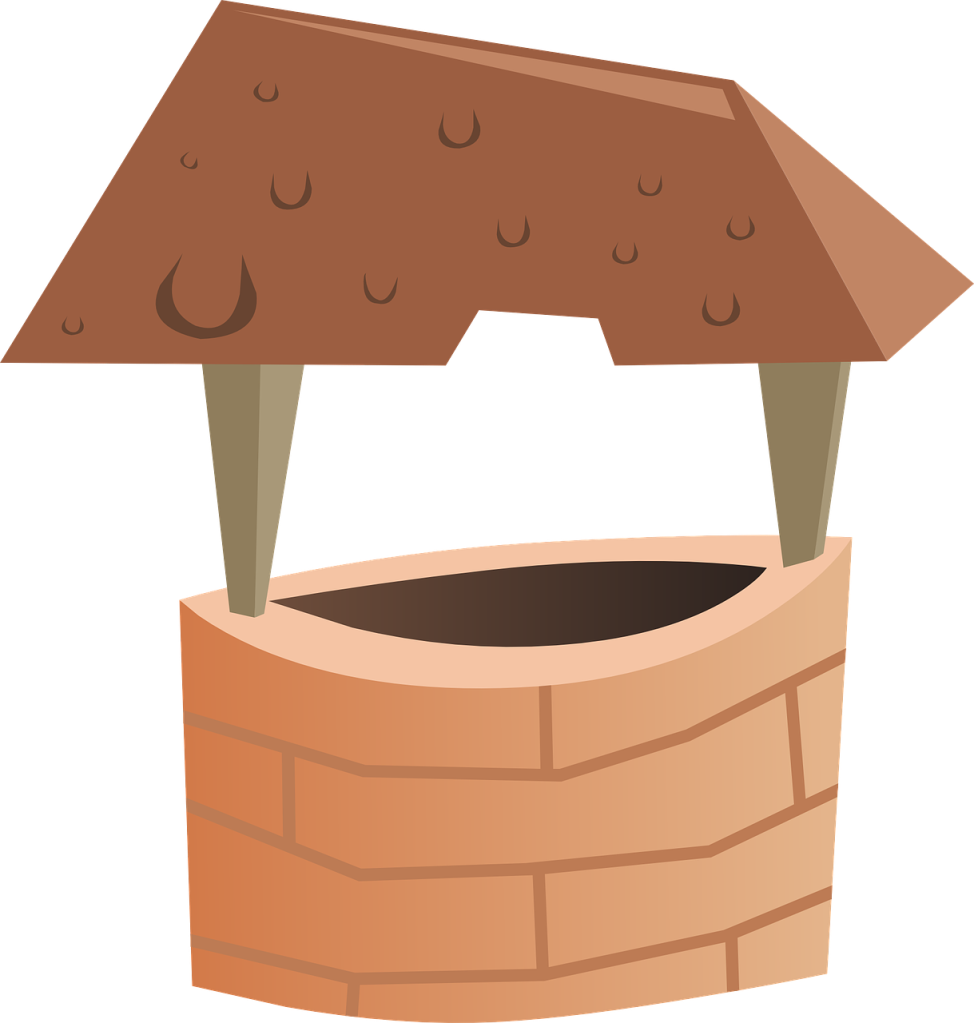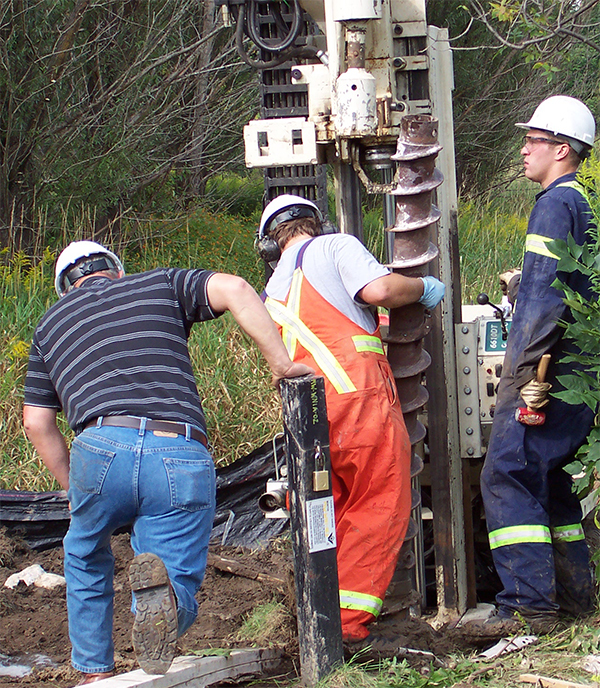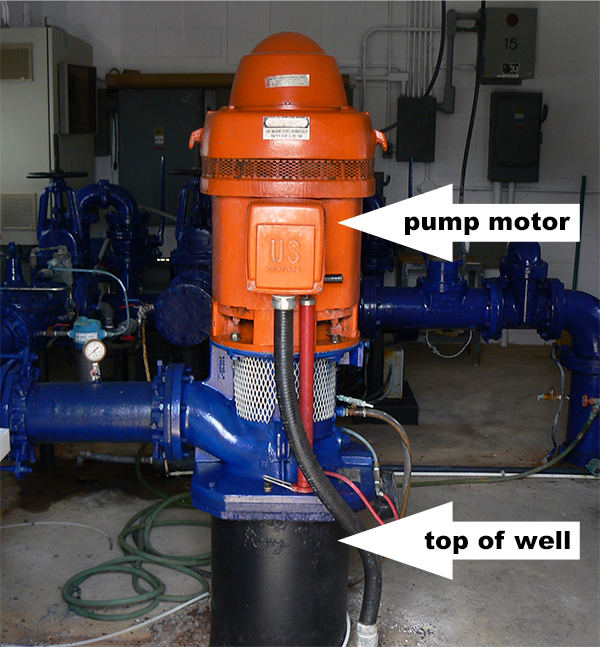Hopefully you now know that I spend a lot of time deep underground moving through sand grains, rocks and gravel in what I like to call an aquifer.
I do a lot for you. You drink me, cook and wash with me, and so much more.
But have you ever asked yourself “if groundwater is deep underground, how the heck do we get it to where I am?” Well, we use…wells.
Perhaps a wishing well comes to mind. As a child maybe you tossed a coin over your shoulder and made a wish. Bring back memories? What did you wish for? Did your wishes come true?

Today’s wells don’t typically look like wishing wells. And even though the Region of Waterloo has hundreds scattered throughout Waterloo Region, you probably have never noticed them in your travels.
So what is a well? A well is a metal pipe put into the ground to extract groundwater. Think of it like a big drinking straw.
First, a deep hole is drilled into the ground. How deep depends on how far down I’m hiding. Region of Waterloo municipal wells usually start around 30 metres (100 feet) deep and can reach depths of over 100 metres (330 feet). Once the hole is drilled, a metal pipe is placed inside. At the bottom of the pipe are slits covered with a screen allowing me to enter the pipe.

The Region of Waterloo uses two types of wells – supply wells and monitoring wells.
Supply wells move the groundwater from underground to above ground for you to use. A pump pushes me up the well. It’s probably like you spending the day on the rides at the fall fair. Once I get to the top of the well I go through a treatment process and tested to make sure I am good to go for you to drink. After that I hitch a ride through underground pipes to your home.
The supply well is located inside or beside a pump house. Operation of the well is monitored 24 hours a day, 7 days a week from a central location. From this location the operator can control how much of me is pumped through the well. The Region of Waterloo manages over 120 supply wells throughout Waterloo Region.

The other type of well is a monitoring well. Monitoring wells collect information on the health of the groundwater. This includes collecting samples to test for water quality and to measure groundwater levels in the aquifer. Monitoring wells are placed near supply wells or along the path groundwater takes underground to reach the supply well. For each supply well, monitoring wells are drilled at different depths to provide information on the aquifer from different layers or locations. The Region of Waterloo manages over 400 monitoring wells throughout Waterloo Region.

Have you ever asked yourself “if groundwater is deep underground, how the heck do we get it to where I am?” Well, we use…wells. #iamgroundwaterblog
Tweet
